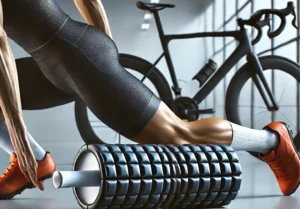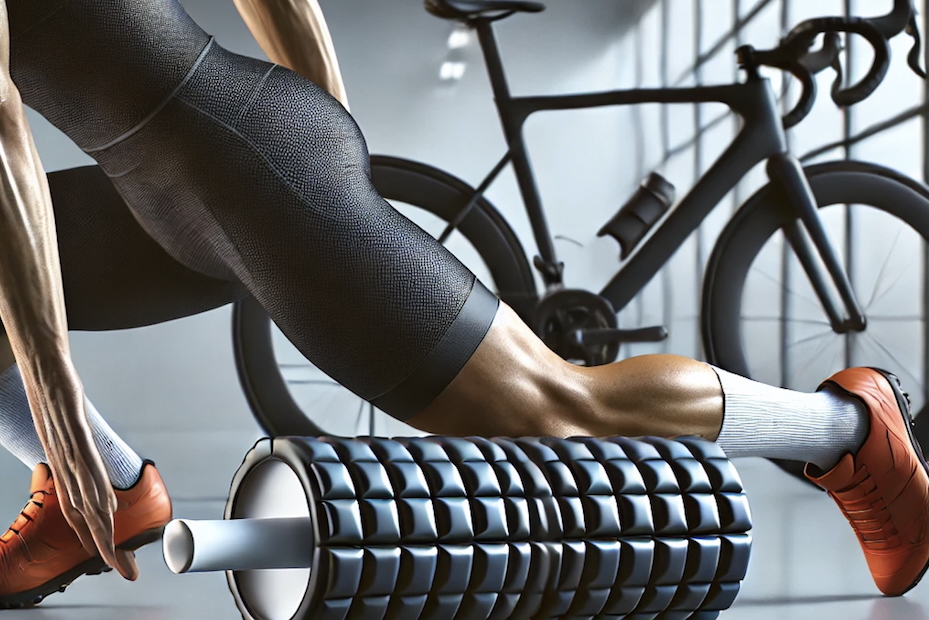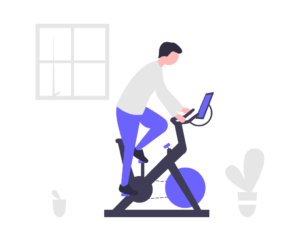Foam Rolling Your IT Band: Benefits for Cyclists and Pain Relief
IT Band Pain Cycling
Cyclists frequently experience tightness and pain along the outer thigh, often attributed to the iliotibial (IT) band. While IT band syndrome is a common issue, foam rolling is a widely recommended tool for managing discomfort and improving mobility. But does foam rolling actually help? Let’s explore the science behind foam rolling, its benefits for cyclists, and best practices for IT band care.
Understanding IT Band Pain in Cyclists
The IT band is a thick band of connective tissue running from the hip to the shin. It plays a crucial role in stabilizing the knee during pedaling. However, due to repetitive cycling motions, prolonged sitting, and improper bike fit, the IT band can become tight and inflamed, leading to discomfort and even pain.
What Causes IT Band Pain in Cycling?
- Overuse & Repetitive Motion: Continuous knee flexion and extension can cause friction and irritation.
- Poor Bike Fit: Incorrect saddle height or positioning can strain the IT band.
- Weak Hip & Glute Muscles: Weak stabilizing muscles force the IT band to compensate.
- Lack of Flexibility: Tight hip flexors and quadriceps can contribute to IT band tension.
Can Foam Rolling Help? The Science Behind It
Foam rolling, also known as self-myofascial release, is thought to alleviate muscle tightness and improve blood flow. Studies suggest that foam rolling can increase short-term flexibility and reduce muscle soreness, but its effectiveness on the IT band specifically remains debated.
What Studies Say:
- Foam Rolling & Flexibility
A study published in the Journal of Strength and Conditioning Research (MacDonald et al., 2013) found that foam rolling improved range of motion without reducing muscle performance. - Impact on IT Band Tension
The IT band itself is non-contractile, meaning foam rolling does not directly stretch it. However, research (Behm & Wilke, 2019) suggests that foam rolling may help reduce tightness by releasing tension in surrounding muscles like the quadriceps and tensor fasciae latae (TFL). - Pain Reduction & Recovery
A 2015 study in the International Journal of Sports Physical Therapy showed that foam rolling reduces delayed onset muscle soreness (DOMS), which may contribute to overall leg comfort for cyclists.
How Cyclists Can Benefit from Foam Rolling
1. Reduced Muscle Tension
While foam rolling doesn’t directly stretch the IT band, it can relieve tightness in the quadriceps and hip muscles, reducing strain on the IT band.
2. Improved Recovery
Regular foam rolling increases circulation, helping clear metabolic waste and reducing muscle soreness after long rides.
3. Injury Prevention
Loosening surrounding muscles can help maintain proper knee alignment, reducing the risk of IT band syndrome.
4. Enhanced Mobility & Performance
A well-functioning IT band contributes to better pedal stroke efficiency and power transfer.
Best Practices for Foam Rolling Your IT Band
If you’re experiencing IT band pain, avoid rolling directly on the IT band itself. Instead, target surrounding muscles:
Step-by-Step Guide
- Roll the Quads: Lie face down and use a foam roller under your thighs. Roll slowly from the top of your quad down to just above the knee.
- Target the TFL: Side-lying with the roller under your hip, apply gentle pressure to release tension in the tensor fasciae latae.
- Work the Glutes: Sit on the roller with one ankle crossed over the opposite knee, rolling back and forth to relieve tension in the gluteus medius.
Alternative IT Band Pain Solutions
- Strength Training: Focus on glute activation and hip stability exercises.
- Bike Fit Optimization: Ensure your saddle height and cleat position are correctly adjusted.
- Stretching Routine: Incorporate stretches for the hip flexors and quadriceps.
- Rest & Recovery: If pain persists, reduce riding intensity and consider professional physiotherapy.
Conclusion
While foam rolling may not directly lengthen the IT band, it can significantly aid in reducing surrounding muscle tension, improving mobility, and preventing cycling-related discomfort. Incorporating foam rolling into your recovery routine can help keep you pain-free and pedaling efficiently.
Check out our other healing & conditioning articles here.
Check out more IT Band foam rolling tips here.







